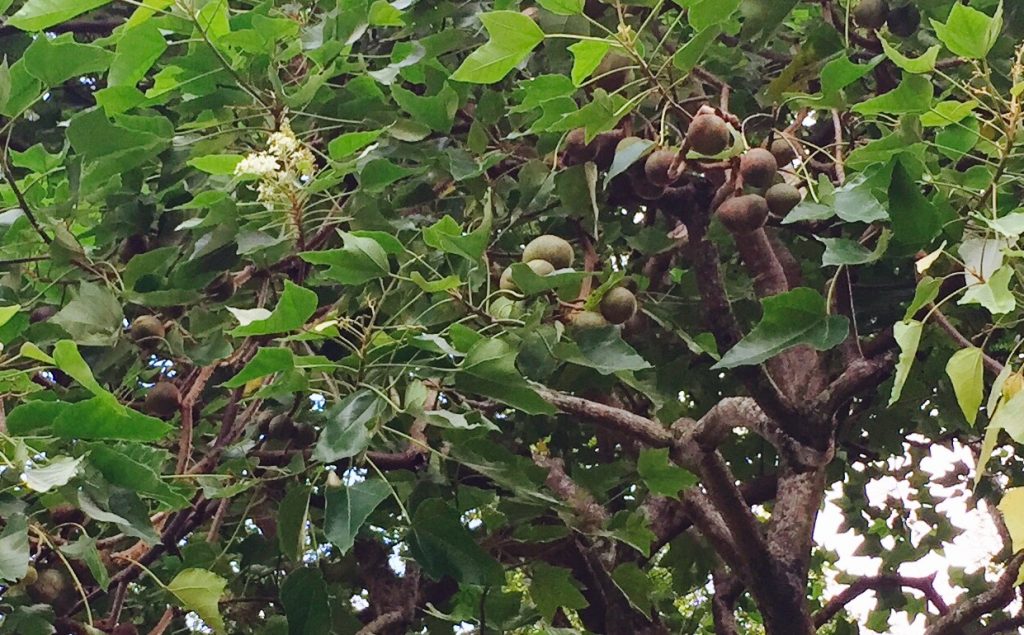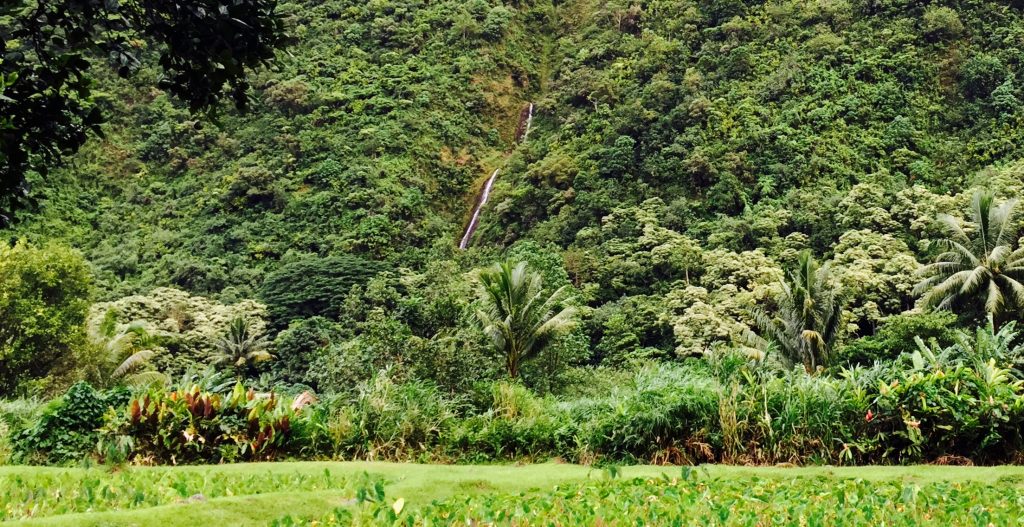Candlenut Tree Provides More Than Light
The Aleurites moluccanus, aka kukui, the state tree of Hawai’i, is also commonly known as the candlenut tree.
While it is believed to have been brought to Hawaii from Asia by early Polynesian settlers, it is nearly impossible to know its exact origination because it was so widely spread throughout the New and Old World tropics long ago.
It is a flowering tree that can grow over 80 feet tall. The leaves are pale green; the nut is round and commonly ranges from 1.5 to 2.5 inches in diameter.
The seed on the inside has a very hard coating and is very high in oil content, which led to it being used as a candle—hence the name “candlenut tree.”
In ancient Hawai’i, the nuts were burned to provide light. Kukui nuts strung on the midrib of a palm leaf were lit at one end. The nuts burned one by one for about 15 minutes each. This also led to their use as a measure of time.
The oil extracted from the nut was also burned in a stone lamp with a wick made of kapa cloth, called a “kukui hele po.”
The oil was also used as a varnish for canoes and other handcrafted wooden items.
Applying a coat of kukui oil also helped to preserve ‘upena (fishing nets).
For thousands of years, kukui nut oil has been used for its traditional healing benefits, especially its excellent skin moisturizing effects.
Hawaiians used it to help protect their skin from the harsh effects of the elements like the sun, wind and salt water. It was used to soothe sunburn, wind burn, acne, eczema and other problematic skin conditions.
Kukui oil is a safe, natural product that can even be used for infant care. It is known to help soothe diaper rash and removal of cradle cap.
Fishermen would chew on the nuts then spit them on the water to clear the surface, removing reflections and giving them clearer underwater visibility.
The Hawaiians utilized the kukui tree or nut for many other things:
The trunk of the tree was sometimes used to make smaller canoes and seats for the canoes.
The charred nuts provided black ink that was used for tattooing.
The inner bark was used to create a red-brown dye for use on kapa cloth and aho (cordage).
Hula dancers utilize the bark and nuts of the tree for their costumes.
Spiritually, the tree symbolizes light, hope and renewal.
Today, kukui nut lei are widely known throughout the world—not just in Hawaii. Their natural colors are black, brown and white, although white is rare and harder to come by. There are several variations of marble and tiger-colored nuts as well.
More than just a tree, the kukui nut tree continues to provide the world with more than just light.





















